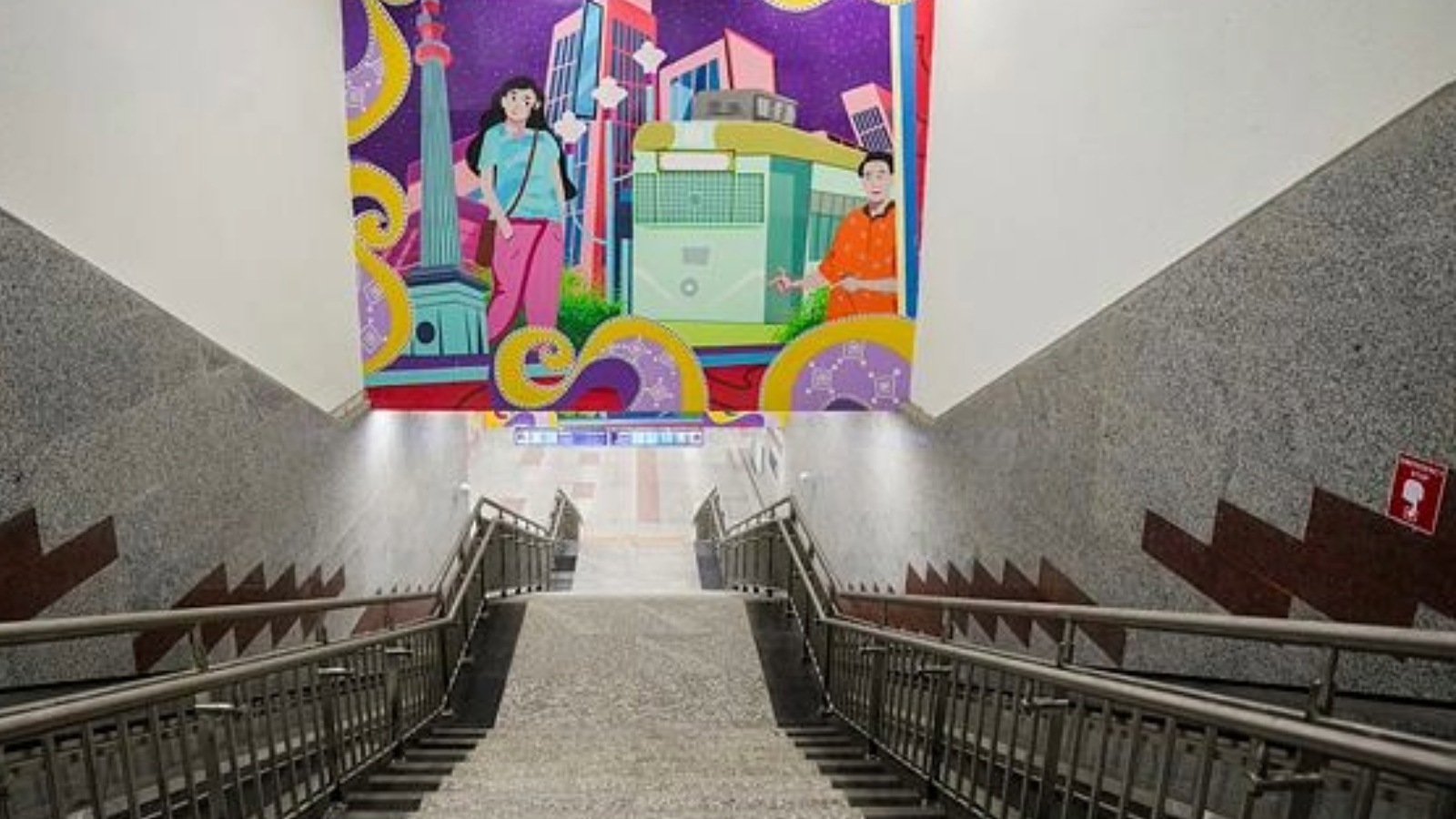Howrah Maidan-Esplanade Metro section: All you need to know about India’s first underwater transportation tunnel
The section passes under the Hooghly River, on the east and west banks of which are situated Kolkata and Howrah cities, respectively.
 A view of the interior of the East West Metro's Esplanade station with colourful murals, ahead its inauguration in Kolkata. The Esplanade station is India's second deepest Metro station with a depth of 28m. PTI
A view of the interior of the East West Metro's Esplanade station with colourful murals, ahead its inauguration in Kolkata. The Esplanade station is India's second deepest Metro station with a depth of 28m. PTIOn Wednesday, Prime Minister Narendra Modi will inaugurate the Kolkata Metro’s Howrah Maidan- Esplanade Metro section, which will be the first transportation tunnel under any big river in India. The Howrah Metro Station, which is part of the section, is the deepest Metro station in India. The section passes under the Hooghly River, on the east and west banks of which are situated in Kolkata and Howrah cities, respectively.
Project to provide seamless connectivity
Under the metro project, a 16.6 km-long corridor between Salt Lake Sector-V to Howrah Maidan, including the tunnel below river Hooghly, has been constructed. As per officials, the 4.80 km stretch from Howrah Maidan to Esplanade (underwater metro) stretch of the Green Line of the East-West Metro Corridor will have three stations — Howrah Maidan, Howrah Station Complex, and BBD Bagh (Mahakaran).
The passage, 520 metres from one bank to the other and more than 30 metres (100 feet) below the river surface at its deepest points, is India’s first underwater transport tunnel. There are 12 stations on the entire route, including the country’s deepest, Howrah, at the depth of 33 metres.
The trains will have an operational speed of 80 km/h, and will cover the half-kilometre stretch under the Hooghly in about 45 seconds.
Other sections include the Kavi Subhash-Hemanta Mukhopadhyay and the Taratala-Majerhat metro links. The three sections will help decongest road traffic and provide seamless, easy and comfortable connectivity, according to the government.
The Metro inauguration is part of the event during which PM Modi will dedicate and lay the foundation stone of connectivity projects worth Rs 15,400 crore in Kolkata.
#WATCH | India’s first underwater metro rail service in Kolkata set to be inaugurated by PM Modi on 6th March pic.twitter.com/ib5938Vn8x
— ANI (@ANI) March 5, 2024
Technology and challenges
The tunnels under the Hooghly have an internal diameter of 5.55 metres and an external diameter of 6.1 metres. The centre-to-centre distance between the east- and west-bound tunnels is 16.1 metres. Two TBMs finished the job in a record 66 days from April to June 2017. The first machine crossed the river in May 2017; the second in June that year.
“Several measures have been taken to prevent water inflow and leakages in the tunnel. Concrete mixes composed of fly ash and micro silica have been used for the segments to minimise water permeability. The inner walls are of high-quality M50-grade reinforced concrete segments with a thickness of 275 mm each, which were sealed together using a complex grouting process,” a technical expert associated with the project said.
Under the organic clay of the riverbed lies a layer of sandy silt. The German-made TBMs, christened Prerna and Rachna, bored through the layer below that, described as “firm to stiff clayey silt”.
The Brabourne Road area that lies close to the river is old and busy, and residents of several old buildings were moved out to hotels while the TBMs were at work. The problem of seepage in the Bowbazar area due to the punctured aquifer is yet to be resolved — until that happens, the entire East-West corridor cannot be commissioned and the full potential of the project will not be realised, officials said.
“Apart from the underwater tunneling, tunneling in areas with historic buildings like Dalhousie was a challenge. But not a single building in the Dalhousie area developed any cracks. As far as Bowbazar is concerned, the area has water pockets which had not been detected earlier. However, this too will be resolved by May-June next year. Nothing is impossible. The entire project was a challenge, which was accepted and well executed,” Chief Public Relations Officer of Eastern Railway and Metro, Kausik Mitra, had told The Indian Express.
Years in the making: Metro sections approved in October 2020
The above-mentioned metro sections were approved by the Ministry of Railways at an estimated cost of Rs 8574.98 crore. The project has been implemented by Kolkata Metro Rail Corporation Limited [KMRCL] which is a CPSE under Ministry of Railways, set up as a special purpose vehicle.
As of now, the Kolkata Metro has three operational lines — Dakshineswar to Kavi Subhash; Salt Lake Sector V to Sealdah; and Joka to Taratala. Three other lines are in various phases of construction.
The Kavi Subhash-Hemanta Mukhopadhyay stretch between New Garia and Ruby is a 5.4-km-long stretch. It is a part of Kavi Subhash to Jai Hind Airport station via Rajarhat. The plan is to link the North-South Metro with the New Garia-Airport corridor at the Kavi Subhas terminal (South Kolkata). The 13.27-km-long Joka to Taratala corridor, which is already operational, has been extended by another 1.24 km to Majerhat.
- 01
- 02
- 03
- 04
- 05































